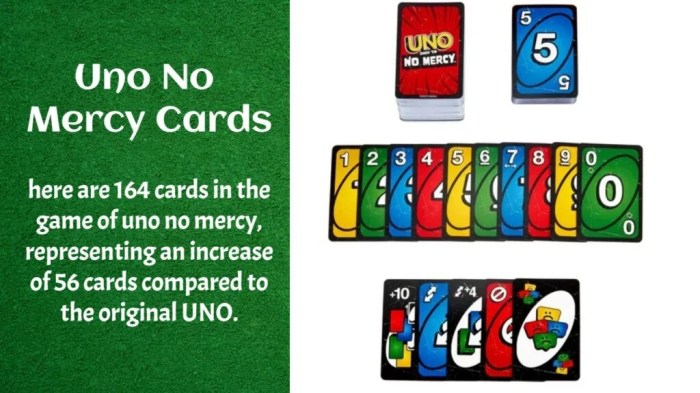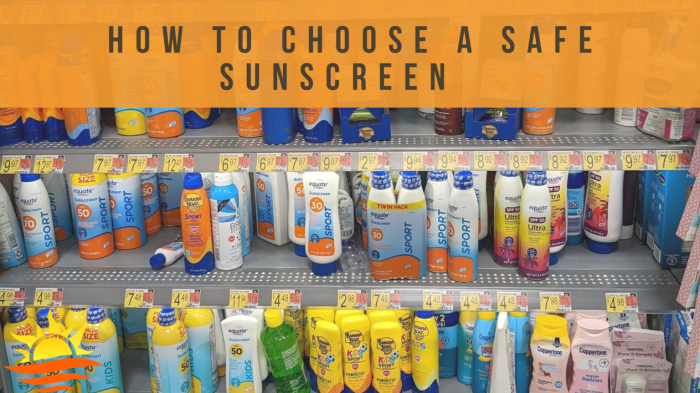What is the best sunscreen for tattoos? This in-depth guide explores the crucial considerations for protecting your ink from the sun’s harmful rays. We’ll delve into different sunscreen types, discuss crucial factors influencing your choice, and provide practical application techniques.
From understanding the various ingredients in sunscreens to identifying potential issues and solutions, this guide aims to empower you with the knowledge to select the perfect sunscreen for your unique tattoo and skin type. We’ll also offer recommendations, reviews, and advice on long-term protection and maintenance.
Sunscreen Types for Tattoos

Choosing the right sunscreen for your tattooed skin is crucial for preserving its vibrant colors and preventing premature fading. Different sunscreen formulations react differently with ink, and some ingredients can cause irritation or discoloration. Understanding the various types of sunscreens and their potential effects on tattoos is key to making an informed decision.
Sunscreen Types and Their Suitability for Tattoos
Different sunscreen formulations use various approaches to protect skin from the sun’s harmful UV rays. This section explores the common types and their specific characteristics.
| Sunscreen Type | Ingredients | Pros | Cons |
|---|---|---|---|
| Mineral Sunscreen | Zinc oxide and titanium dioxide are the primary active ingredients. These are considered physical or mineral sunscreens. | Generally well-tolerated by sensitive skin, including tattooed skin. Less likely to cause allergic reactions. Known to be gentler on tattoos, minimizing the risk of discoloration. | Can sometimes leave a white cast on the skin. May not be as effective as chemical sunscreens in high-UV conditions. Some formulations may feel heavy or greasy. |
| Chemical Sunscreen | Active ingredients include oxybenzone, avobenzone, octisalate, octocrylene, homosalate, and octinoxate. These ingredients absorb UV rays and convert them into heat. | Often provides broader spectrum protection against both UVA and UVB rays. Can be lighter and less greasy than mineral sunscreens. Generally more effective in high-UV conditions. | Some chemical sunscreen ingredients have been linked to potential environmental concerns and some studies have indicated potential skin irritation or allergic reactions in some individuals. The effectiveness of some ingredients can vary depending on the formulation. |
| Hybrid Sunscreen | Combines both mineral and chemical filters. Formulations often include zinc oxide and titanium dioxide along with chemical filters. | Offers broader spectrum protection than mineral alone, often with less visible white cast. Can provide a good balance of effectiveness and gentleness on the skin. | May have the same potential drawbacks as both mineral and chemical sunscreens, depending on the specific formulation and ingredients. |
Ingredients and Their Potential Effects on Tattoos
The specific ingredients in a sunscreen can have a direct impact on the longevity and appearance of a tattoo. Understanding these interactions is crucial for maintaining tattoo integrity.
Zinc oxide and titanium dioxide, common in mineral sunscreens, are generally considered safe for tattoos due to their physical blocking action. However, some formulations may still cause mild irritation or discoloration in certain individuals.
Chemical sunscreen ingredients, while often more effective, can sometimes interact with tattoo ink. In rare cases, certain chemical filters can cause discoloration or fading of the tattoo over time. Always test a small, inconspicuous area of the tattoo with a new sunscreen before applying it to the entire area.
Pros and Cons of Each Sunscreen Type in Terms of Tattoo Protection and Skin Health
This section provides a comparative overview of the advantages and disadvantages of each sunscreen type.
Mineral sunscreens are often a good choice for tattooed skin due to their generally low risk of causing discoloration or irritation. However, their potential for leaving a white cast and less broad spectrum protection should be considered.
Chemical sunscreens, with their broader spectrum protection and often lighter feel, might be preferred in high-UV environments. However, the potential for allergic reactions or discoloration needs to be considered and assessed on a case-by-case basis.
Hybrid sunscreens aim to strike a balance between the advantages of both mineral and chemical sunscreens. They offer a good combination of broad-spectrum protection with reduced white cast compared to mineral alone. However, the exact performance and safety profiles depend on the specific hybrid formula.
Factors Affecting Sunscreen Choice for Tattoos
Choosing the right sunscreen for your tattoos is crucial for maintaining their vibrant colors and preventing premature fading. Different factors play a significant role in this decision, impacting not only the longevity but also the overall health of the skin around the tattoo. Understanding these factors allows for a more informed approach to sun protection, ensuring your ink stays beautiful for years to come.The effectiveness of a sunscreen on a tattoo depends on several factors.
These include the type of ink used, the individual’s skin sensitivity, and the environmental conditions. A sunscreen that works well for one person and one tattoo might not be ideal for another. Therefore, a personalized approach is essential for optimal results.
Tattoo Ink Type
Different tattoo inks react differently to sunlight. Some inks are more susceptible to fading or discoloration when exposed to UV rays. Certain pigments may require sunscreens with specific ingredients or filters to maintain their vibrancy. For instance, dark inks might benefit from sunscreens with a higher SPF to prevent fading, while lighter inks might need a milder approach.
This necessitates a careful consideration of the specific ink composition when selecting a sunscreen.
Skin Sensitivity, What is the best sunscreen for tattoos
Individual skin sensitivity plays a critical role in choosing a sunscreen. Some people may experience allergic reactions or irritation from certain sunscreen ingredients, like certain preservatives or chemical filters. This is particularly important for tattoos, as the skin around the ink may be more sensitive than other areas. A sunscreen with hypoallergenic or fragrance-free formulations is preferable for individuals with sensitive skin.
Environmental Conditions
Environmental conditions, such as high altitudes, intense sunlight, or frequent swimming, significantly impact sunscreen effectiveness. For example, individuals who frequently swim or work outdoors may need a water-resistant sunscreen with a higher SPF to provide adequate protection. The intensity of UV radiation can also vary greatly depending on the time of day, season, and geographic location. This necessitates choosing a sunscreen that effectively blocks UV radiation under the specific environmental conditions.
Finding the perfect sunscreen for tattoos can be tricky, but a broad-spectrum, mineral-based option is generally best. It’s important to avoid harsh chemicals that could irritate the skin, especially delicate tattooed areas. Sometimes, though, it’s not the sunscreen that’s the problem; it could be a child’s picky eating habits. If you’re concerned about your child not eating anything, checking out resources like what to do when your child is not eating anything might offer some helpful insights.
Ultimately, the best sunscreen for tattoos is one that protects and doesn’t cause any issues, like irritation or fading.
Water Resistance and SPF
Water resistance is a crucial factor for those who frequently swim or sweat. A water-resistant sunscreen will maintain its protective effect even after exposure to water. The sun protection factor (SPF) indicates the sunscreen’s ability to protect the skin from UVB rays. A higher SPF generally provides better protection, but it’s important to note that SPF alone doesn’t protect against all forms of UV radiation.
The use of broad-spectrum sunscreens, which protect against both UVA and UVB rays, is highly recommended.
Skin Sensitivity and Recommended Sunscreen Types
| Skin Sensitivity | Recommended Sunscreen Types |
|---|---|
| Normal Skin | Most sunscreens are suitable, including chemical and mineral-based options. |
| Sensitive Skin | Hypoallergenic, fragrance-free, and mineral-based sunscreens are recommended. Avoid chemical filters like oxybenzone and octinoxate. |
| Dry Skin | Cream-based or lotion-based sunscreens with moisturizing ingredients are preferable. Look for sunscreens that contain emollients or humectants. |
| Oily Skin | Oil-free or non-comedogenic sunscreens are best to prevent clogged pores. |
| Acne-prone Skin | Non-comedogenic, oil-free, and mineral-based sunscreens are recommended. |
Sunscreen with a high SPF and water resistance is generally recommended for tattoos.
Sunscreen Application Techniques for Tattoos
Applying sunscreen to a tattoo is crucial for protecting the ink and the skin underneath. Proper application techniques prevent damage from the sun’s harmful UV rays, which can fade the ink, cause premature aging, and increase the risk of skin cancer. This meticulous approach is especially important for those with tattoos, as the skin in the tattooed area may be more susceptible to certain sun-related issues.
Finding the perfect sunscreen for your tattoos can be tricky, especially if you’re prone to skin sensitivities. A good sunscreen should be gentle and non-irritating, but what if you suspect you have a skin condition like atopic dermatitis? Before diving into sunscreen recommendations, it’s a good idea to check out resources like ask an expert self diagnose atopic dermatitis to rule out any underlying issues.
Ultimately, a dermatologist or skincare professional can give you the best personalized advice on the best sunscreen for your specific needs and skin type, ensuring your tattoos stay vibrant and protected.
Proper Application for Even Coverage
Even coverage is paramount to ensure complete UV protection. A thin, even layer of sunscreen should be applied to the entire tattooed area. Avoid applying too much sunscreen at once, as this can lead to a thick, uneven layer that may not absorb properly. Using your fingertips or a soft-bristled brush can aid in the distribution of the sunscreen.
Be mindful of areas where the skin is raised or recessed. Ensure that these areas are also thoroughly covered, which might require a slightly adjusted application technique.
Complete Absorption
To maximize the sunscreen’s effectiveness, ensure complete absorption. Allow the sunscreen to sit on the skin for a few minutes before getting dressed or engaging in activities. This allows the sunscreen to form a protective barrier against UV radiation. Avoid rubbing the sunscreen in vigorously, as this can disrupt the protective layer.
Reapplication Frequency
Reapplication frequency depends on activity level and sun exposure. For example, if you’re swimming or sweating, reapply sunscreen more frequently. This is crucial for maintaining adequate protection throughout the day. As a general guideline, reapply every two hours, or more often if you’re sweating or swimming. Always check the sunscreen’s label for specific instructions on reapplication.
Step-by-Step Guide for Applying Sunscreen to a Tattoo
This step-by-step guide will help you apply sunscreen to your tattoo effectively:
- Preparation: Cleanse the tattooed area gently with a mild cleanser. Pat dry thoroughly to avoid leaving any water droplets on the skin.
- Sunscreen Selection: Choose a broad-spectrum sunscreen with an SPF of 30 or higher. Look for sunscreens specifically formulated for sensitive skin or tattoos if needed.
- Application: Using your fingertips or a soft-bristled brush, apply a thin, even layer of sunscreen to the entire tattoo area. Don’t forget to cover any raised or recessed areas.
- Absorption: Allow the sunscreen to absorb into the skin for a few minutes before dressing or engaging in activities. Avoid rubbing the sunscreen in.
- Reapplication: Reapply sunscreen every two hours, or more frequently if swimming or sweating. Pay close attention to the label’s reapplication instructions.
Potential Issues and Solutions
Protecting your beautiful tattoo from the sun is crucial, but choosing the right sunscreen can be tricky. Certain sunscreens can cause irritation, discoloration, or even fading of the ink, impacting the longevity and appearance of your tattoo. Understanding potential problems and having solutions readily available is key to maintaining your tattoo’s vibrant look.Using the right sunscreen is essential for preventing damage to your tattoo.
Many factors can contribute to problems, from the ingredients in the sunscreen to the application technique. This section will delve into common issues, their causes, and practical solutions to ensure your tattoo stays stunning.
Identifying Potential Problems
Protecting your tattoo from the sun is important for maintaining its vibrancy and preventing damage. However, some sunscreens can interact negatively with the ink, leading to irritation, discoloration, or even fading. This can manifest as redness, itching, or changes in the tattoo’s color, which can be quite disheartening. Understanding these potential problems is crucial for making informed decisions about sunscreen selection.
Finding the perfect sunscreen for tattoos can be tricky, as harsh chemicals can fade or irritate the ink. A good rule of thumb is to look for broad-spectrum protection with mineral-based ingredients like zinc oxide or titanium dioxide. Knowing when the brain fully develops, as detailed in this article when is the brain fully developed , is fascinating, but ultimately, choosing a gentle, effective sunscreen for your tattoos is key.
It’s all about finding a balance between protecting your skin and keeping your ink looking vibrant.
Sunscreen Ingredients and Tattoo Compatibility
Some sunscreen ingredients can cause irritation or discoloration. For example, certain preservatives or fragrances can trigger allergic reactions, leading to redness, itching, or even a rash around the tattoo. Active ingredients like oxybenzone or octinoxate can sometimes lead to discoloration or fading in some cases. Choosing a sunscreen specifically formulated for sensitive skin or tattoos is vital to minimize these risks.
Look for products labeled as fragrance-free, hypoallergenic, or specifically designed for sensitive skin. These options often contain milder ingredients and are less likely to cause irritation.
Patch Testing: A Crucial Step
Before applying any new sunscreen to a tattoo, it’s absolutely essential to perform a patch test. Applying a small amount of the sunscreen to a hidden area of skin, like the inside of your wrist, and observing for any adverse reactions like redness, itching, or rash for 24-48 hours is crucial. This precautionary step helps you identify potential allergies or sensitivities to particular ingredients, allowing you to adjust your sunscreen choice if necessary.
Table of Common Sunscreen Problems, Causes, and Solutions
| Problem | Potential Cause | Solution |
|---|---|---|
| Irritation (redness, itching, rash) | Harsh chemicals in sunscreen, sensitivity to preservatives, fragrances, or other ingredients | Use fragrance-free, hypoallergenic, or tattoo-specific sunscreens. Perform a patch test before full application. Consider switching to mineral sunscreens (zinc oxide or titanium dioxide) as they are often less irritating. |
| Discoloration (change in tattoo color) | Certain sunscreen ingredients interacting with tattoo ink, prolonged exposure to harsh UV rays | Use a tattoo-specific sunscreen, perform patch tests, and limit sun exposure. Opt for mineral sunscreens which are less likely to affect tattoo color. |
| Fading (loss of tattoo vibrancy) | Prolonged exposure to UV rays without adequate protection, interaction between sunscreen ingredients and tattoo ink | Consistent use of a broad-spectrum sunscreen with an SPF of 30 or higher, limiting sun exposure, using a protective clothing covering the tattoo |
Brand Recommendations and Reviews: What Is The Best Sunscreen For Tattoos
Finding the perfect sunscreen for tattooed skin can feel like searching for a needle in a haystack. Different brands offer varying levels of protection and ingredients, and what works for one person might not work for another. This section dives into some popular choices, their user experiences, and how they stack up against each other.Choosing a sunscreen for your tattoos isn’t just about finding one that works; it’s about finding one that respects your skin’s unique needs.
Different brands have different formulations, and understanding these differences is crucial for ensuring your tattoo stays vibrant and your skin remains healthy.
Sunscreen Brand Recommendations
Various brands have gained recognition for their tattoo-friendly formulas. This list offers some of the top contenders, but remember that individual experiences can vary. Always perform a patch test before applying any new product to a large area.
- La Roche-Posay Anthelios Melt-In Sunscreen Milk: Known for its broad-spectrum protection and lightweight formula, this milk is often praised for its ability to blend seamlessly into tattoos, preventing streaks and white cast. Users appreciate its non-greasy feel and fast absorption. A common concern, however, revolves around the potential for slight fragrance, which might be a sensitive point for some individuals.
- EltaMD UV Clear Broad-Spectrum SPF 46: Formulated with ceramides and antioxidants, this sunscreen is highly regarded for its hydrating properties, which are beneficial for tattoo maintenance. Many users find its ability to prevent redness and irritation helpful, particularly after tattooing. Its slightly thicker texture may not be ideal for every skin type.
- CeraVe AM Facial Moisturizing Lotion SPF 30: A popular choice due to its gentle formula, CeraVe is a good option for those with sensitive skin or those who have experienced irritation with other sunscreens. Users appreciate its ability to provide hydration without clogging pores. While it generally works well under makeup, its slightly thicker texture might not be ideal for those who prefer a lighter feel.
- Badger Balm SPF 30: A natural and gentle option, Badger Balm is beloved by those who prefer chemical-free or minimal-chemical sunscreens. Its gentle formula is appreciated by those who want to minimize potential irritation around tattoos. The downside, for some, is that the balm might have a slightly heavier feel than some other sunscreens.
Comparative Analysis of Sunscreen Brands
The following table provides a concise overview of different sunscreen brands and their key features, alongside user feedback.
| Brand | Key Features | Customer Feedback | Protection Level |
|---|---|---|---|
| La Roche-Posay Anthelios | Lightweight, broad-spectrum, blends well | Good for tattoos, non-greasy, fast absorption, some report slight fragrance | High |
| EltaMD UV Clear | Hydrating, broad-spectrum, good for sensitive skin | Reduces redness, good for aftercare, slightly thicker texture | Very High |
| CeraVe AM | Gentle, hydrating, suitable for sensitive skin | Good under makeup, gentle formula, slightly thicker texture | High |
| Badger Balm | Natural, chemical-free, gentle | Good for sensitive skin, gentle, slightly heavier feel | Medium-High |
Sunscreen Ingredients to Avoid
Protecting your newly inked or treasured tattoos from the sun is crucial for their longevity and appearance. However, not all sunscreens are created equal when it comes to tattoo-friendly formulas. Certain ingredients can cause irritation, discoloration, or even permanent damage to the delicate skin surrounding the tattoo. Understanding which ingredients to avoid is key to maintaining your tattoo’s vibrant beauty.
Identifying Problematic Sunscreen Ingredients
Sunscreen formulations contain a wide array of chemical filters and other additives. Some of these components can interact with the ink in your tattoo, potentially leading to undesirable outcomes. Careful selection of sunscreen is vital for preserving your tattoo’s integrity and preventing long-term issues.
Problematic Sunscreen Ingredients and Their Risks
Certain chemical sunscreen filters can cause skin irritation, discoloration, or even permanent damage to tattooed skin. It’s important to be aware of these ingredients and choose products that avoid them.
- Oxybenzone: This chemical UV filter is known to potentially cause allergic reactions and irritation in some individuals. It has been linked to coral reef damage, though its effects on tattoos are less extensively documented. Alternatives like mineral sunscreens can offer a safer solution.
- Octinoxate: Similar to oxybenzone, octinoxate is another chemical UV filter that may cause allergic reactions or skin irritation, especially in sensitive individuals. Again, opting for mineral-based sunscreens can be a safer approach.
- Avobenzone: While generally safe, avobenzone can sometimes cause skin discoloration or irritation in some individuals, particularly those with sensitive skin. Alternatives, such as titanium dioxide and zinc oxide, are typically well-tolerated.
- Parabens: Parabens are preservatives frequently found in sunscreen formulations. Some individuals may experience allergic reactions to parabens. Choosing paraben-free sunscreens is a practical option for those concerned about such sensitivities.
- Fragrances: Fragrances are often added to sunscreens for scent. These can trigger allergic reactions in individuals with sensitive skin, potentially causing redness or irritation around the tattoo area. Fragrance-free sunscreens are a safer alternative.
Safe Alternatives for Tattoo-Friendly Sunscreen
Mineral-based sunscreens are a great alternative for tattoo-protected skin. They utilize titanium dioxide and zinc oxide as UV filters, which are generally well-tolerated and pose a significantly lower risk of causing irritation or discoloration.
- Titanium Dioxide: A mineral UV filter that is generally considered safe and effective for most skin types. It works by creating a physical barrier that reflects UV rays.
- Zinc Oxide: Another mineral UV filter, zinc oxide also acts as a physical barrier, reflecting UV rays away from the skin. It is known for its broad-spectrum protection and generally low risk of irritation.
Important Considerations
Always conduct a patch test before applying any new sunscreen to a large area of tattooed skin. This precaution helps to identify any potential allergic reactions or irritations.
Remember that even with safe ingredients, individual reactions can vary. If you experience any irritation, discontinue use and consult with a dermatologist.
Sunscreen Testing Methods

Testing sunscreen on tattooed skin requires careful consideration to avoid irritation or allergic reactions. A thorough approach involves various methods, starting with patch tests on small areas of the tattoo to identify potential sensitivities before widespread application. This process ensures safety and helps determine the best sunscreen for individual skin needs.
Patch Test Methodology
Patch testing is a crucial method for evaluating sunscreen compatibility with tattooed skin. It involves applying a small amount of sunscreen to a discreet, inconspicuous area of the tattoo and observing for any signs of reaction. This method allows for early detection of potential issues like redness, itching, or blistering.
Safe and Effective Testing Procedures
A safe and effective patch test protocol involves several key steps:
- Select a small, inconspicuous area of the tattoo. Avoid areas with existing irritation or inflammation. The area should be easily visible and accessible for monitoring.
- Apply a small, thin layer of the sunscreen to the selected test area. Ensure even coverage.
- Monitor the test area for any signs of irritation or allergic reactions for at least 24-48 hours. Look for redness, swelling, itching, or blistering. Note the time of appearance and severity of any reaction.
- If no reaction occurs within 48 hours, the sunscreen can be considered potentially safe for use on the tattoo. Continue monitoring for a few more days to account for delayed reactions.
- If any reaction is observed, discontinue use of the sunscreen immediately. Consult a dermatologist for appropriate treatment.
Detailed Sunscreen Patch Test Procedure
To perform a detailed patch test, follow these steps:
- Preparation: Cleanse the selected area of the tattoo thoroughly with a gentle, fragrance-free cleanser. Pat dry with a soft towel.
- Application: Apply a pea-sized amount of the sunscreen to the chosen area. Use a cotton swab or your fingertip to ensure even distribution. Avoid rubbing the sunscreen into the skin.
- Observation: Cover the test area with a bandage to prevent it from rubbing against clothing or other materials. Monitor the test site for any signs of irritation or reaction. Record the time and any observed changes in a notebook or journal.
- Monitoring: Check the area for redness, swelling, itching, or blistering at least once a day, and preferably twice daily. Note the severity and location of any reaction. Continue monitoring for 48-72 hours to ensure no delayed reactions occur.
- Documentation: Maintain a record of the date, time, and any changes observed during the test. This detailed documentation will aid in identifying any patterns or triggers.
Importance of Monitoring for Reactions
Monitoring for any reaction is paramount. Delayed reactions can occur, so prolonged observation is crucial. Early detection of adverse effects allows for prompt intervention and prevents potential complications. A delayed reaction might manifest as a mild rash several hours or even a day after application, emphasizing the necessity of continued vigilance.
Long-Term Protection and Maintenance
Maintaining the health and vibrancy of your tattoos requires consistent care, especially when using sunscreen. This involves more than just applying a product; it’s about a proactive approach to long-term protection and ongoing maintenance. Understanding the interplay between sunscreen and your skin’s unique needs is crucial for preserving your tattoo’s appearance and preventing potential issues.Long-term sunscreen use is essential for preserving tattoo integrity and preventing premature fading or damage.
The sun’s ultraviolet (UV) rays can significantly affect the color and longevity of your ink, while regular use of appropriate sunscreen minimizes this impact.
Sunscreen Application Strategies for Lasting Protection
Consistent application is key to maintaining the integrity of your tattoo. Apply sunscreen liberally and evenly to the tattooed area, ensuring complete coverage. Use a broad-spectrum sunscreen with an SPF of 30 or higher. Reapply sunscreen frequently, especially after swimming, sweating, or toweling off. This is crucial because these activities can cause the sunscreen to wear off, exposing your tattoo to harmful UV rays.
Regular Checks for Irritation or Damage
Regularly examining your tattooed skin for any signs of irritation, redness, or unusual changes is vital. This vigilance allows you to catch problems early and address them promptly. Early intervention can often prevent more significant issues from developing. Changes in the texture, color, or shape of your tattoo could signal a problem. Prompt attention to any anomalies can help prevent further complications.
A Checklist for Long-Term Tattoo Sunscreen Protection
- Consistent Application: Apply sunscreen liberally and evenly to the tattooed area before sun exposure, and reapply frequently, especially after swimming, sweating, or toweling off.
- Broad-Spectrum Protection: Choose a broad-spectrum sunscreen with an SPF of 30 or higher. This ensures protection against both UVA and UVB rays.
- Frequent Reapplication: Reapply sunscreen every two hours, or more often if you’re swimming or sweating.
- Waterproof/Water-Resistant Formula: Select a water-resistant or waterproof sunscreen to maintain protection in water-based activities.
- Gentle Cleaning: Use mild, fragrance-free cleansers and avoid harsh soaps or scrubbing when cleaning the area around your tattoo.
- Regular Examination: Examine your tattoo regularly for any signs of irritation, changes in color, or unusual skin reactions. Document any changes and consult a dermatologist if you have concerns.
End of Discussion
Choosing the right sunscreen for your tattoos is a personalized journey, and this guide provides a roadmap to navigate the process effectively. Remember to consider your tattoo ink type, skin sensitivity, and environmental conditions. Prioritize ingredients that won’t harm your ink and your skin, and always practice proper application techniques. By following the tips and insights presented here, you can maintain the vibrant beauty of your tattoos while safeguarding them from the sun’s damaging effects for years to come.







